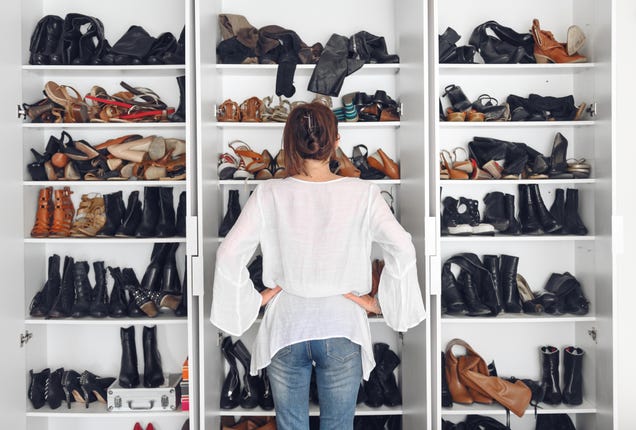In many ways it’s a typical TikTok : Shelby Orme shows off her bedroom decor, cosmetics collection, and shelves of leafy green plants to more than 275,000 followers. A Norah Jones song plays softly in the background. But there is a twist.
Orme’s bed is on the floor – a bed frame “just seemed unnecessary.” She smiles and waves at the camera through her reflection in a broken mirror that she found in the trash. New plants are propagated from the ones she already owned and her makeup is “depotted” from older palettes.

Orme, a sustainable living advocate, captioned the video “#underconsumptioncore” – a reference to the latest TikTok trend. Like any TikTok vocabulary, the definition of underconsumption core is fairly amorphous. The name plays on what are frequently consumption-oriented TikTok aesthetics like cottagecore or Barbiecore – and the original, millennial root word: normcore.
The difference, however, is that underconsumption core is theoretically based on the idea of buying less and not giving into the influencing that drives these other trends. “The irony lies in the fact that underconsumption is a practice, while ‘core’ refers to an aesthetic,” trend creator and Depop trend specialist Agus Panzoni told . In some respects, this trend flies in the face of what users experience every time they open the TikTok app.
It can be easy to get influenced on TikTok and then immediately spend money: users can simply click on the top-right corner of their screen and find themselves in the TikTok Shop, where influencers and brands sell directly to consumers. You don’t even have to close the app to spend money. “Underconsumption core is a memetic antithesis to a consumerist hype cycle we have become accustomed to,” trend forecaster Shanu Walpita told the Guardian.
“Consumers are celebrating minimalism as a form of activism.” While the trend may seem positive on its face, some influencers and academics are skeptical of the ways in which TikTokers are branding what is a typical experience for many people as a new way to live. “It would be iffy to not acknowledge the fetishization or glamorization of poverty and class hierarchy,” Walpita told the Guardian.
“The irony is that there is an element of privilege to choosing to actively lean into underconsumption and turn it into a form of viral, sharable content.” Others argue that much like the millennial minimalism trend, some Gen Zers might end up spending more to look like they’re buying less, rather than actually reducing their shopping. “[The millennial minimalism trend] was admittedly flawed from the start, because it implies a specific aesthetic that becomes more and more difficult to adhere to,” Jessie Kosak, an instructor at Arizona State University’s Fashion Institute of Design and Merchandising told HuffPost.
“With trends like this, people sometimes swap one form of consumption for another.” An underconsumption core , shared by “luxury minimalist” TikToker dianabxrosa, has amassed more than two million views and more than 113,000 likes. The clip, captioned “underconsumption is my identity” features Jimmy Choo shoes (“nude and black is all you need”), purses from Louis Vuitton and Yves Saint Laurent (“one for every day and one for going out”) and three tote bags – two with visible Loewe and Louis Vuitton branding (“summer, travel and work in one picture.
”) One TikToker, who goes by the user name Pretty Critical, posted a critiquing the trend as a “trap.” She argued that people with shopping addictions often use overspending in an attempt to manufacture their fantasy lives. By watching underconsumption core videos where “there’s a beautiful montage of a beautiful woman underconsuming,” she believes some people are simply falling into a different pattern of consumption.
“You’re going to say, ‘Well I just need one good bag that I can use every single day. So I’m going to get rid of all the bags I have and get one perfect bag,’” she predicted. “Guess what? You just consumed.
And that one bag will not be enough.’” 📬 Sign up for the Daily Brief Our free, fast, and fun briefing on the global economy, delivered every weekday morning..



















